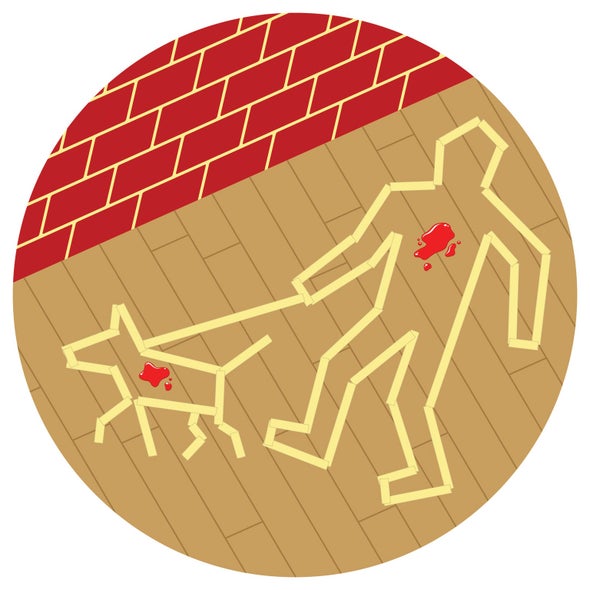A sleepy driver on a dark road hears a loud “thump!” and later finds a speck of blood on the front bumper. Or police spot a tiny but suspicious bloodstain at a crime scene. Quickly determining whether such traces come from humans or animals is crucial, but the necessary tests can be time-consuming—and may destroy valuable evidence. Researchers say a new technique could help.
To develop a rapid, nondestructive way to identify human blood, State University of New York at Albany forensic chemists Igor Lednev and Ewelina Mistek-Morabito combined spectroscopy and statistics. They shined infrared light on dried samples of human blood and on those of 10 animal species, including common pets such as dogs, cats and ferrets, as well as deer and elk (both of which are often struck by vehicles). The researchers recorded the reflected light, the spectrum of which changes based on blood's composition. They then used these data to train a machine-learning algorithm to quickly and accurately distinguish human from animal sources.
“Our technique could really help narrow down samples that are relevant to the case, before they are sent to a lab for DNA analysis,” Mistek-Morabito says. Forensic scientists currently use destructive biochemical tests for differentiating human and animal blood—and these tests sometimes return incorrect results. The new system's accuracy has yet to be tested in the field, but Mistek-Morabito says that the initial results are encouraging.
In their study, published in Communications Chemistry, the researchers used a desktop lab instrument. Lednev is working to adapt the technology for use in a portable, handheld device. He envisions a handy, all-in-one spectroscopic tool that could one day characterize body fluid traces on the spot. “Portable instruments are the future,” Mistek-Morabito says. “It would help us bring the lab to the crime scene.”
“The study is a proof-of-concept for a nondestructive method to analyze samples,” says University of South Florida forensic scientist Peter Massey, who was not involved in the project. To be of practical use in the field, the instrument must be small, easy-to-use and affordable, he adds.
Spectroscopy-based techniques are promising because they can potentially be as compact as a cell phone, says Matthieu Baudelet, a forensic chemist at the University of Central Florida, who was also not part of the research. But because the machine-learning process does not reveal specific physiological reasons for differences in spectra, Baudelet wonders if the results would hold up for blood from wild animals with wide-ranging diets and health.
To prepare the technology for practical forensics, the researchers will test and calibrate it with increasingly varied samples; Lednev is collaborating with forensic scientists from the New York State Police Crime Laboratory System to validate the technique under real crime-scene conditions.

